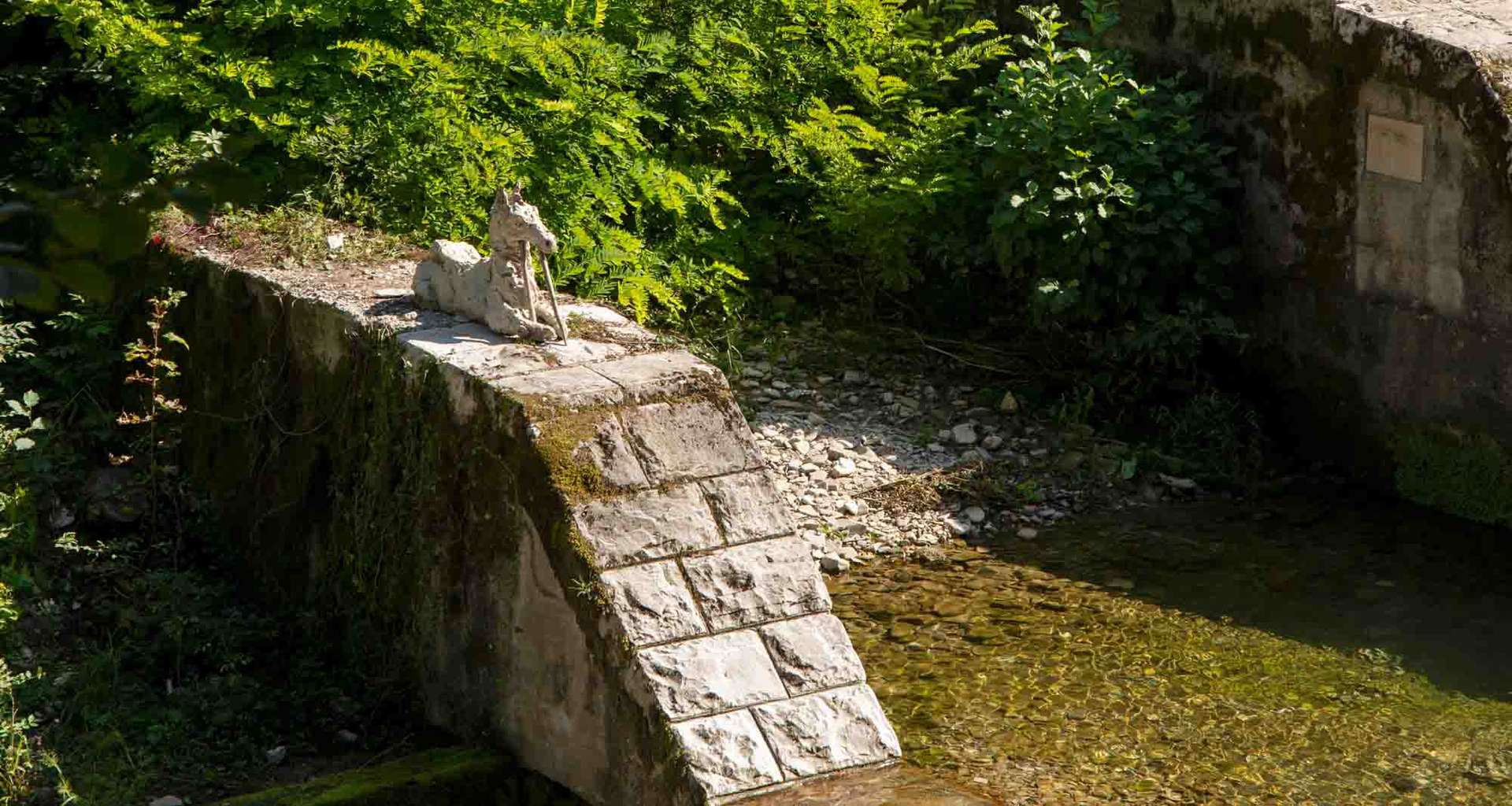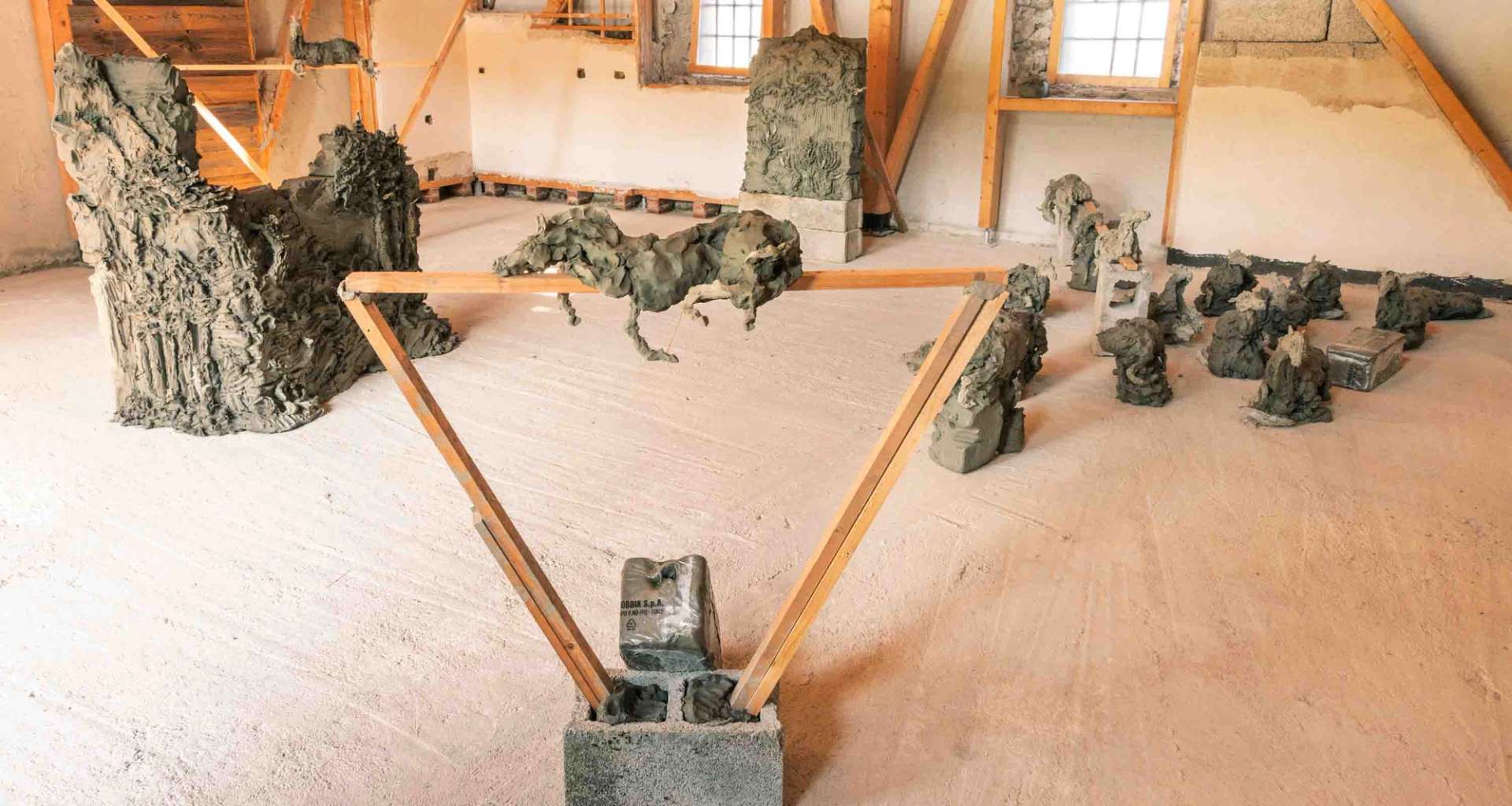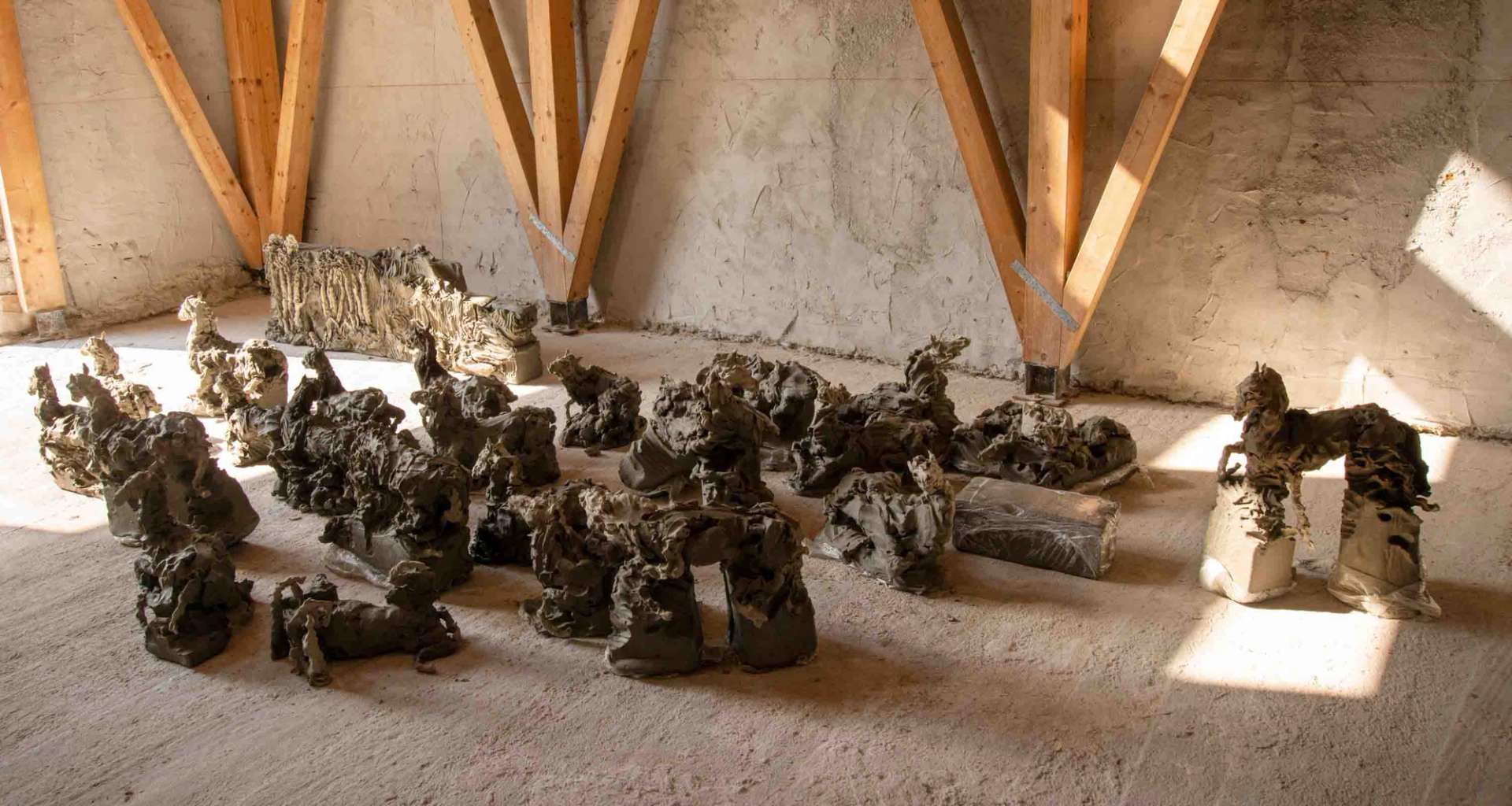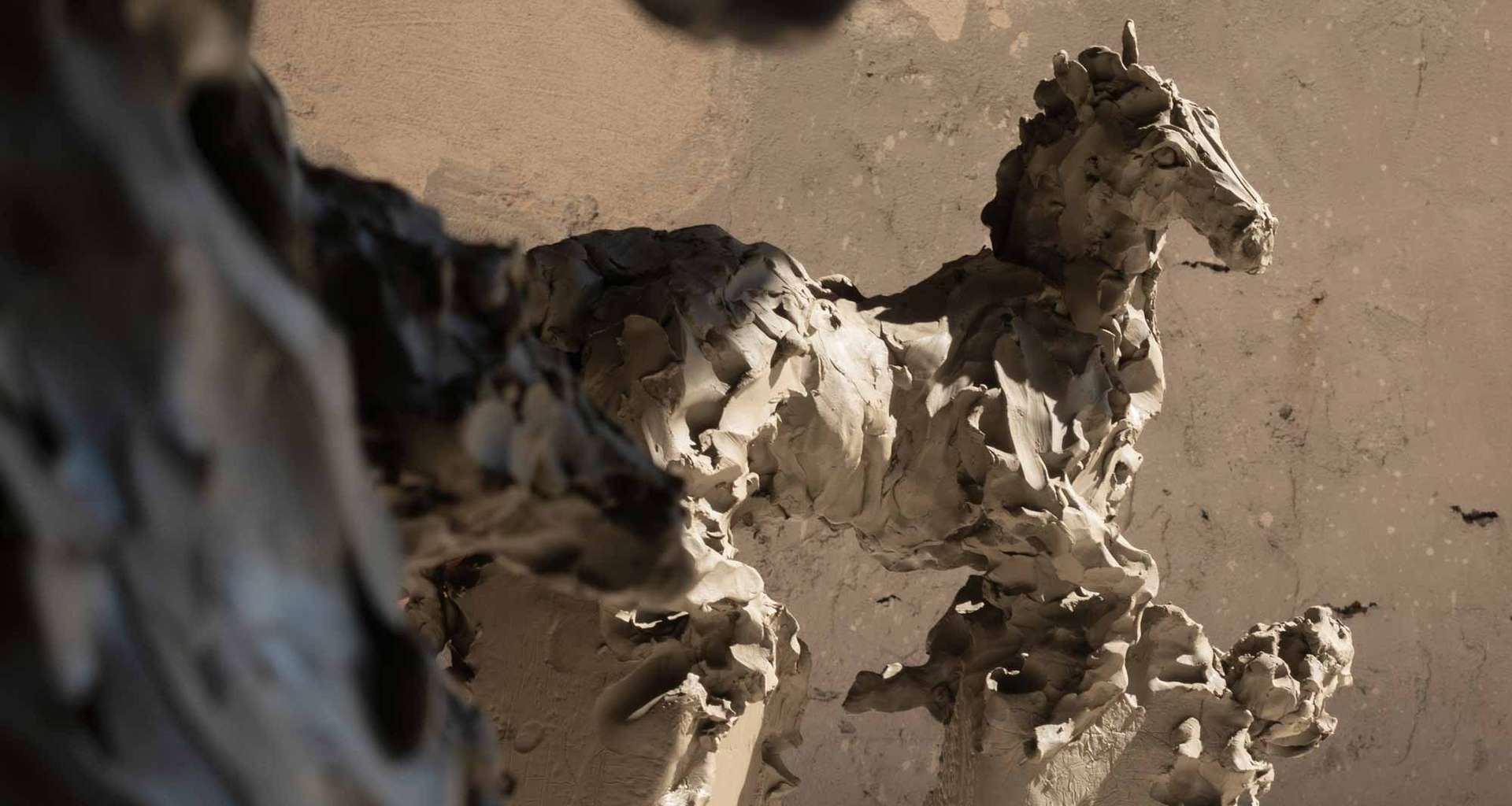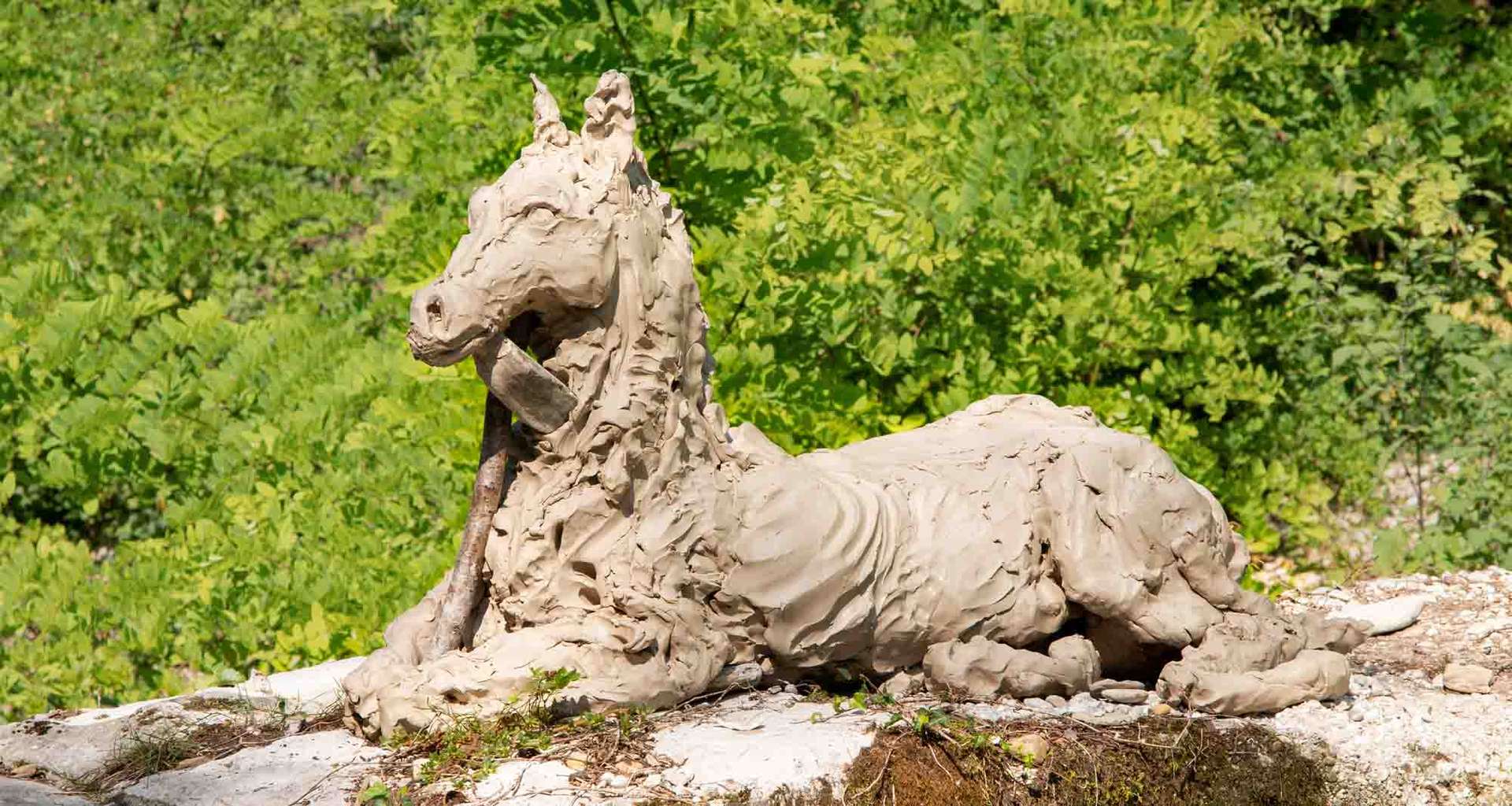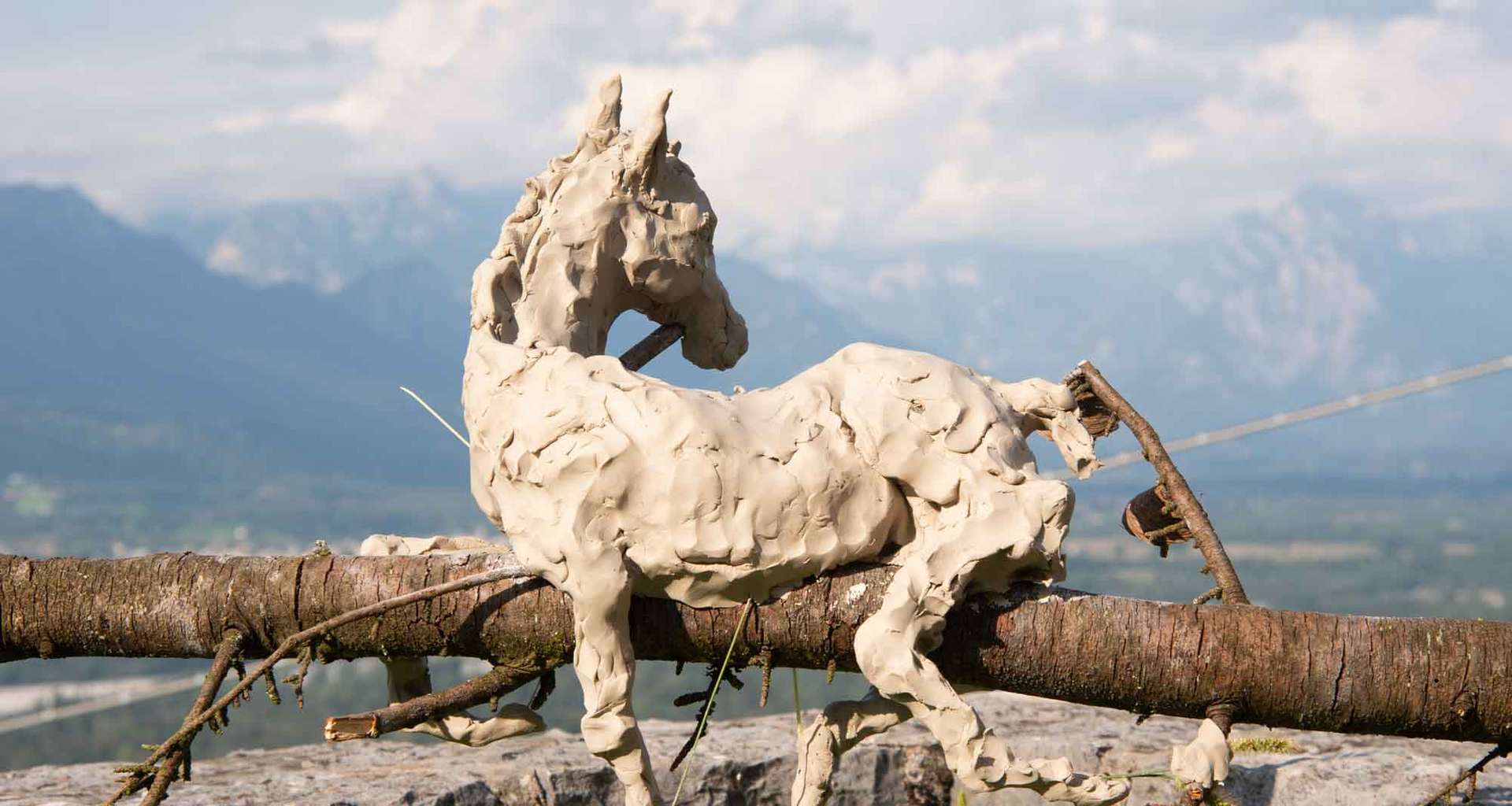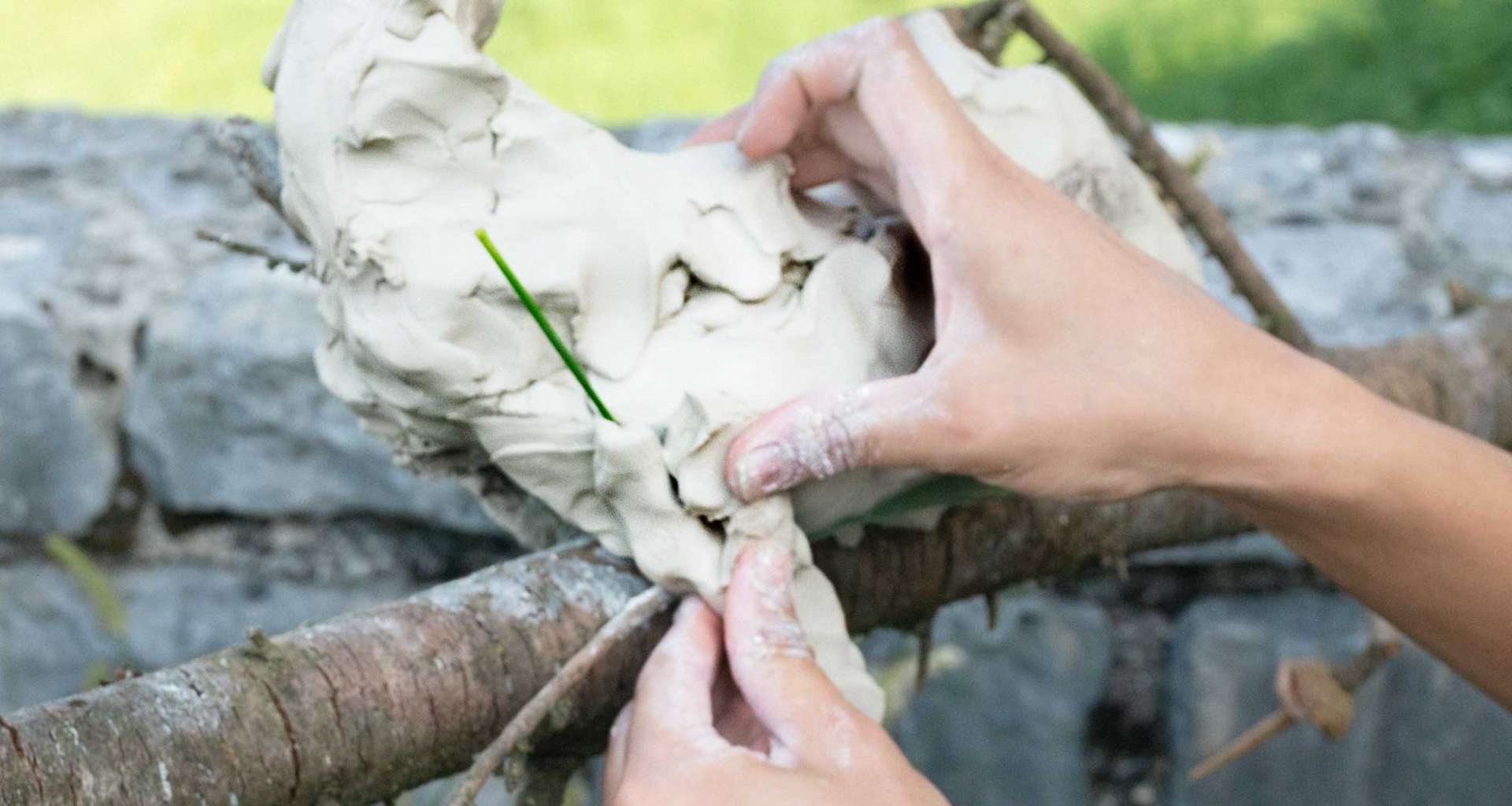The initial inspiration for Zuult came from a traditional Mongolian story. A herd, fleeing drought, moves away from its homeland and settles in a more lush area. But no one seems to care about the population there, and a flock of geese violently attacks them. A lone white mare, who is shown to be wise and respectful, is saved, along with her foal, and together they return to their land of origin. History teaches us how important it is to respect others and how much each one of us belongs, for better or for worse, to the land from which we come. Paying tribute to the mare, during a residency in the village, the artist used unfired clay to create several equine sculptures with a grey livery, in an almost life-size scale. The sculptures were destined to disappear and return to be part of the land and its natural cycles. Conceptually, Zuult aims at welding together the three towns of Lentiai, Mel and Trichiana, which have now been joined together for about a year and a half to form the municipality of Borgo Valbelluna. To this end, the sculptures are spread throughout the territory. The artist made this decision during his residency, after deep exploration of the area.
THE WIND OF AUTUMN ALWAYS BLOWS FROM BEHIND, BRINGING MEMORIES OF YESTERDAY, MELTING INTO THOUGHTS FOR TOMORROW
Bekhbaatar Enkhtur (Ulaanbaatar, 1994) investigated space through sound, a fundamental aspect of his artistic research, along with natural elements. The latter was pivotal to the work the artist created during the “Daily Practice” exhibition at the Oratory of San Sebastiano in Forlì, where he combined clay, an inorganic material, with leaves, an organic material, creating seven deer (the work is titled “Cervi”).
"ZUULT" IS A TRIBUTE TO THE FIGURE OF THE HORSE. THE ARTIST USED UNFIRED CLAY TO CREATE SEVERAL EQUINE SCULPTURES WITH A GREY LIVERY, IN AN ALMOST LIFE-SIZE SCALE. THE SCULPTURES WERE DESTINED TO DISAPPEAR AND RETURN TO BE PART OF THE LAND AND ITS NATURAL CYCLES
The village of Mel stands on a hill in the center of Valbelluna; off in the distance, you can see the majestic outline of the Dolomites, while from the ridge of the Prealps, the view stretches to the lagoon of Venice. Mel derives from the Latin “gemellae”, and may refer to the “twin castles” of Zumelle and Castelvint. Zumelle is the best-preserved medieval fortified site in the Valbelluna, open to the public for visits. Castelvint, on the other hand, has disappeared, but not without leaving behind interesting traces of its past: a silver patera, dating to the 6th century, and a Lombard nobleman’s tomb containing precious objects. To get to know the area’s history in depth,visitors can explore the Civic Museum, which holds the tomb goods sourced from the Paleovenetian necropolis and early looks at initial studies on the pre-Roman and Roman settlement. Several noble palaces embellish the historic center and reflect four centuries of domination by the Republic of Venice. Namely, there’s the sixteenth-century palace of the Magnifica Comunità, which today serves as the town hall. Its main salon contains frescoes depicting episodes from Orlando Furioso.
